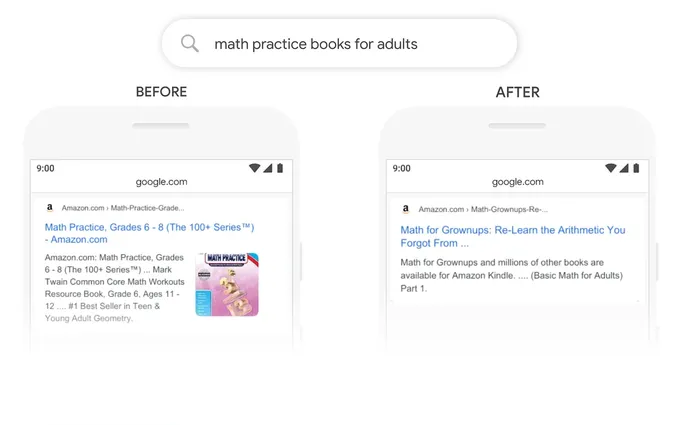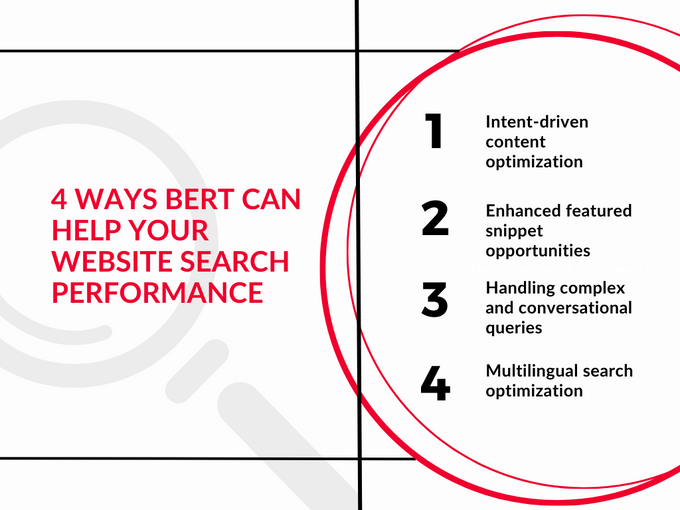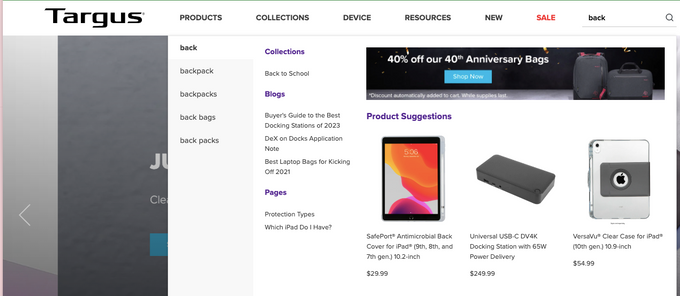How Using BERT Can Help Your Website Search Performance
Make sure you're focusing on search intent and offering the best user experience with lessons from Google's fundamental BERT update.
Updated November 19, 2024

Back in 2019, Google's BERT update impacted how effectively people find answers to their searches. It helped search engines understand natural language and intent more like humans do.
This update remains significant for eCommerce store owners today. Why? Because your customers are now used to BERT-shaped search experiences on Google. They expect your store’s internal search to ‘get’ them in the same way. If it does, they’ll likely have a better user experience, stay longer, and buy more.
So, understanding the principles behind BERT can help boost your eCommerce site’s visibility and improve your on-site search experience, too.
» Help your customers find items fast with a powerful eCommerce product search engine
Meet the Expert
Sandra Stepan, co-founder of SnapAdvantage, has 10 years in digital marketing, focusing on e-commerce expansion. With success in building 7-figure brands, she amplifies growth for top brands. An industry leader, Sandra is a trusted expert for marketing excellence.
What was Google's BERT Update?
BERT, which stands for Bidirectional Encoder Representations from Transformers, was a major step forward for Google Search. It allowed Google to understand natural language search queries in a much more nuanced way. And it does this by focusing on the semantics, or the meaning behind words and sentences.
This resulted in:
- More relevant results: Google can understand the intent behind a search query and return results that are more likely to be helpful to the user.
- More accurate results: BERT cuts ambiguity and misunderstandings for more accurate search results.
- Better understanding of natural language: BERT can handle complex and conversational queries, making it easier for users to find what they're looking for.
For instance, consider the searches below. Previously, the results page might have included a book from the ‘Young Adult’ category. However, with BERT’s advanced understanding, it can select a more appropriate result.
Since the update, websites with relevant information have a higher chance of ranking in search results. This is key for eCommerce, where an average of 33% of retail traffic comes from organic searches. So it's more important than ever for eCommerce businesses to focus on creating high-quality content that is optimized for your target audience's intent.
What's more, users expect internal website search results to align with their implicit intent. Offering a substandard search function can lead to visitors abandoning their carts, with 82% never returning to your site again.
» This is why AI personalization is the future of eCommerce
4 Ways BERT Can Help Your Website Search Performance
1. Intent-Driven Content Optimization
BERT prioritizes understanding the intent behind user searches. Apply this principle by tailoring your on-site content—product descriptions, product names, and blog content—to match user intent.
Use relevant keywords naturally, create compelling headlines that address user needs, and structure your text to answer specific questions. By doing this, you'll improve your rankings on search engines and also improve how users find relevant content on your website.
2. Enhanced Featured Snippet Opportunities
BERT's advanced language understanding makes it a master of featured snippet selection. Featured snippets are selected search results that are featured on top of Google’s organic results in a box to answer the user’s query directly. BERT's advancements accurately extract the most relevant and informative portions of your content.
So if you're considering user intent in how you write content, you may end up right at the top of a person's search. This will boost your content's visibility and accessibility, enticing users to click through to your website.
3. Handling Complex and Conversational Queries
BERT can understand human conversation patterns, which means it handles spoken language queries well. In the growing field of voice commerce, this is a big advantage.
In this context, users often ask complex, conversational questions verbally. Because its capabilities go beyond keyword matching, BERT helps understand the real meaning behind long-tail keywords. And it returns the most relevant results that can help your store land conversions.
For example, a voice search query might be, "Tell me about beginner-friendly running shoes available near me. Something that's in a neutral color would be great!". This may lead to local results highlighting comfortable running shoes made for easy terrain and short distances. The options could be grey, beige, black and white. All of these factors are tailored to the user's unspoken needs.
4. Multilingual Search Optimization
BERT's multilingual capabilities are powerful if you're targeting international audiences. It breaks language barriers, allowing queries in native tongues to be understood.
Optimizing your site and meta descriptions for different languages can attract more customers. But it’s not just translation. You need to grasp language nuances and cultural contexts to effectively tailor your content.
» This is how voice search is changing SEO
Applying BERT Principles to Enhance Your On-Site Search
BERT’s advances have greatly impacted how sites perform on Google, making products more discoverable. However, you can also apply BERT principles to your own site’s search functionality. While integrating BERT directly is highly technical, many advances in natural language processing since BERT’s 2019 release can help.
Incorporate AI-led tools and apps that are designed to interpret natural language into your eCommerce store to improve on-site search results and increase product discovery. For example, Shopify predictive search can help autocomplete queries to help users find what they are looking for.
» Deciding on a search function for your store? Consider these factors
Mobile accessories brand Targus faced challenges with a very basic, non-semantic search. With Fast Simon’s predictive search and recommendations engine, Targus was able to display the right products to the relevant customers.
» Learn how you can optimize your site search with Fast Simon
Simon Says Semantics: Understanding BERT means Understanding Your Customers
As Google aims to provide better experiences to users with each and every update, simply creating keyword-stuffed content just won't cut it anymore. You need to create content and on-site functionality that helps users find solutions to their problems.
That's why it's important to understand fundamental advances like BERT, and apply those principles across your eCommerce store. Make it easy for visitors to search and find what they are looking for with natural language search tools and integrations.
And optimize your site content and product descriptions so you can be found on increasingly competitive search engines.
» Get your customers' needs first time with natural language processing technology








